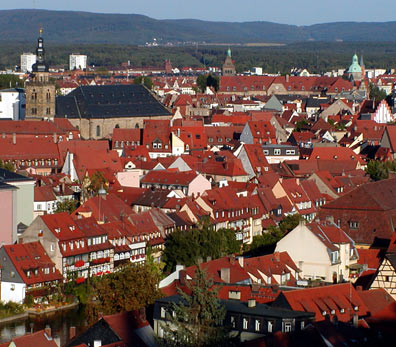 |
|||||
|
The town hall was built in the middle of the 14th century and rebuilt after a fire disaster in 1440. Then in 1744 it was converted into Baroque and Rococo styles. In addition to the wonderful architecture, the walls of the town hall are painted with lovely frescoes. The photo below highlights the central tower, the frescoed walls to the left and the half-timbered portion on the right. The photo at right below shows how it truly sits in the river, the bridge on the left leading to the old town while the bridge on the right leads to the new tow
 the Holy Roman Empire founded the bishopric of Bamberg in 1007 and the first cathedral was consecrated in 1012. However, both it and its successor were destroyed by fire. The grand cathedral has 4 majestic spires and is built in the Late Romanesque and Early Gothic styles. the Holy Roman Empire founded the bishopric of Bamberg in 1007 and the first cathedral was consecrated in 1012. However, both it and its successor were destroyed by fire. The grand cathedral has 4 majestic spires and is built in the Late Romanesque and Early Gothic styles.
Above the cathedral is the former Benedictine monastery of St. Michael, a huge complex with a grand view of the city. The church St. Michael is a magnificent Baroque ch Back down in the town, yet another church caught our eye, the former Jesuit church of St. Martin. This one is right in the center of the shopping area and from the outside it is rather large, but somewhat unimpressive in its architecture. However, once you step inside, you are immediately captivated by the interior (below, left). Of particular note is the trompe l’oeil dome built by Giovanni Francesco Marchini. He did a truly magnificent job making the simple dome look as though it was a dome within a dome. Okay, enough of the churches for now (we are not through yet, though). Walking through the town we came upon the enchanting brass door lever at right, below) The door looks as though it has seen better days, but the clever handle has faired quite well
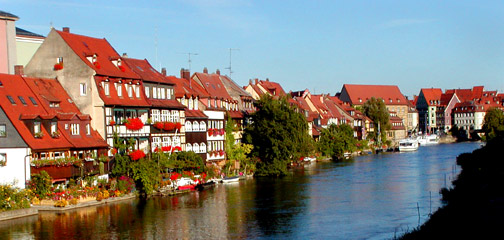 hese are the former houses of fishermen (left). hese are the former houses of fishermen (left).
In Bamberg’s early days, the river was the lifeblood of the town. Today it serves more as a picturesque feature and source of entertainment as the riverboats ply its length full of visitors. Upstream, the many dams and weirs prevent boat travel, but make for delightful surfing for the local kayakers (below, right). Each afternoon several kayakers We found lots of outdoor cafes and restaurants for meals and beer, wonderful bakeries for breakfast, and of course the eis cafes (ice cream shops) for that afternoon cone or becher (sundae). There were also many shops and a couple of department stores so there is probably not much you can’t get here. And while the tourists were definitely in town, we never really felt overwhelmed by the tourists - it had much more of a “home town” feel rather than a tourist attraction, which pleased us.
And we leave you with a view of Bamberg, taken from the gardens of St. Michael. From here you can get a view of the entire city, the woods beyond, and the hills in the distant background. The river Regnitz is visible from the lower left corner of the photo where the old fishermen’s houses still stand. The predominant church in the photo is St. Martins and the others visible in the background we never visited (we told you there were many churches!). Bamberg is a fun and beautiful town worth a visit if you are in northern Bavaria. It is also recognized by UNESCO as a World Heritage site. |
|||||
|
If you find typographical errors or have any other problems when looking at the site please contact the Webmaster describing the problem and the page involved. |
|||||
|
Copyright © 2000-2009 Jim Seavey and Verna Norris All Rights Reserved |
|||||
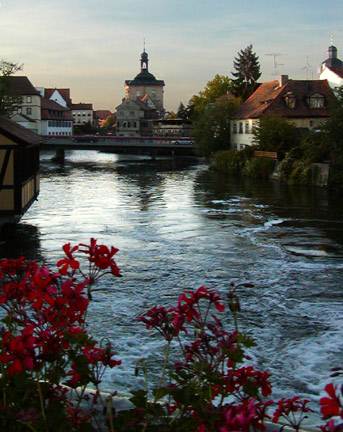 Bamberg is a wonderful, colorful town full of historic buildings and churches, rivers, canals, parks and lots of shopping. We visited in September, 2003 on our return from eastern Europe. We had it in our sights last year when we visited Bavaria, but ran out of time on that trip. This year we stayed a couple of days and enjoyed the peaceful ambiance. The photo at right seemed to capture that ambiance the best - the colorful flowers, rushing river, and the historic town hall, actually built on the river.
Bamberg is a wonderful, colorful town full of historic buildings and churches, rivers, canals, parks and lots of shopping. We visited in September, 2003 on our return from eastern Europe. We had it in our sights last year when we visited Bavaria, but ran out of time on that trip. This year we stayed a couple of days and enjoyed the peaceful ambiance. The photo at right seemed to capture that ambiance the best - the colorful flowers, rushing river, and the historic town hall, actually built on the river.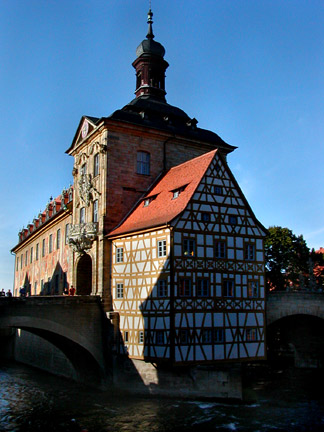 n.
n.
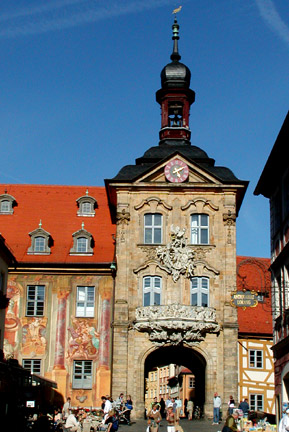
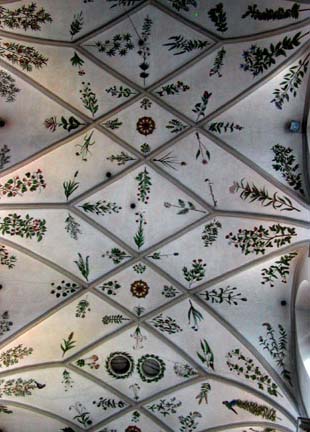 urch built after the former church was devastated by a fire in 1610. The church has a wonderful ceiling painted with 578 flowers and medicinal herbs (right).
urch built after the former church was devastated by a fire in 1610. The church has a wonderful ceiling painted with 578 flowers and medicinal herbs (right).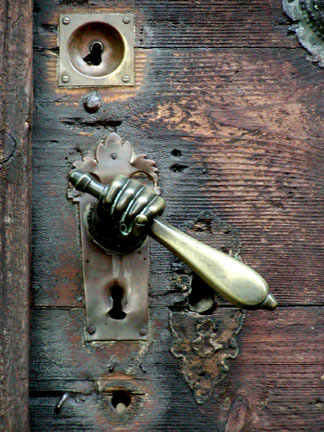 .
.
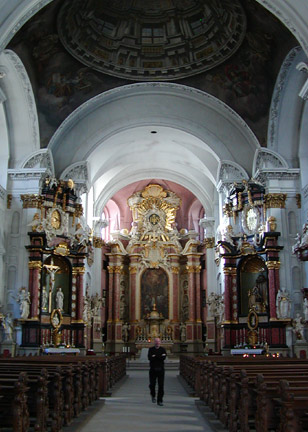
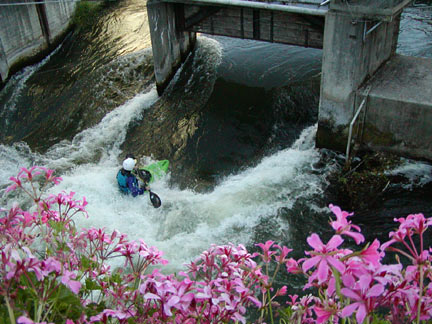 came out and tried their luck at besting the forceful torrent. Two or 3 kayaks would take turns at the run, each paddling furiously for less than a minute before retiring downstream for a rest. Looks like hard work to us!
came out and tried their luck at besting the forceful torrent. Two or 3 kayaks would take turns at the run, each paddling furiously for less than a minute before retiring downstream for a rest. Looks like hard work to us!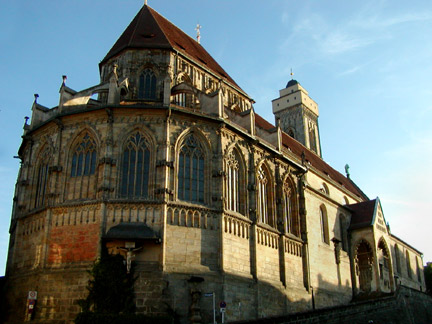 Okay, now back to the churches. There are many more in town and we certainly did not get to see them all, but there is one more we thought was worthy of noting. This is the Upper Parish church, the only purely Gothic church in Bamberg. The nave is from 1325, the chancel from 1375 and the high choir (above the nave, supported by flying buttresses) was added in 1392. On the side, you can see the Wedding Porch that is lined with Gothic sculptures. The inside is completed with Baroque furnishings.
Okay, now back to the churches. There are many more in town and we certainly did not get to see them all, but there is one more we thought was worthy of noting. This is the Upper Parish church, the only purely Gothic church in Bamberg. The nave is from 1325, the chancel from 1375 and the high choir (above the nave, supported by flying buttresses) was added in 1392. On the side, you can see the Wedding Porch that is lined with Gothic sculptures. The inside is completed with Baroque furnishings.